The Wild Beauty Standards Of Victorian England
Besides being known for its technological advancements and increased social mobility, the Victorian era also had some of the wildest beauty standards in history.
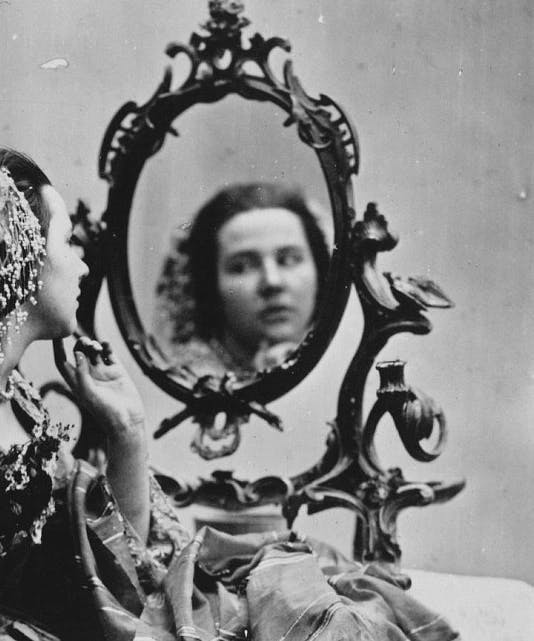
From corsets to lead-infused makeup and far more bizarre yet interesting details, we will discuss the crazy beauty standards people were desperate to achieve in Victorian England.
The Victorian Era spans nearly 60 years of British history. It began in 1838 with the crowning of Queen Victoria, who was only 18 when she took the throne. Her personal style affected fashion throughout the world until her death in 1901. For example, Queen Victoria is famous for starting the white wedding dress trend. For her wedding to Prince Albert in 1840, Queen Victoria wore white. (Brides previously wore their finest dress, of any color.) But the Queen's white dress was so iconic that we're still wearing white to this day.
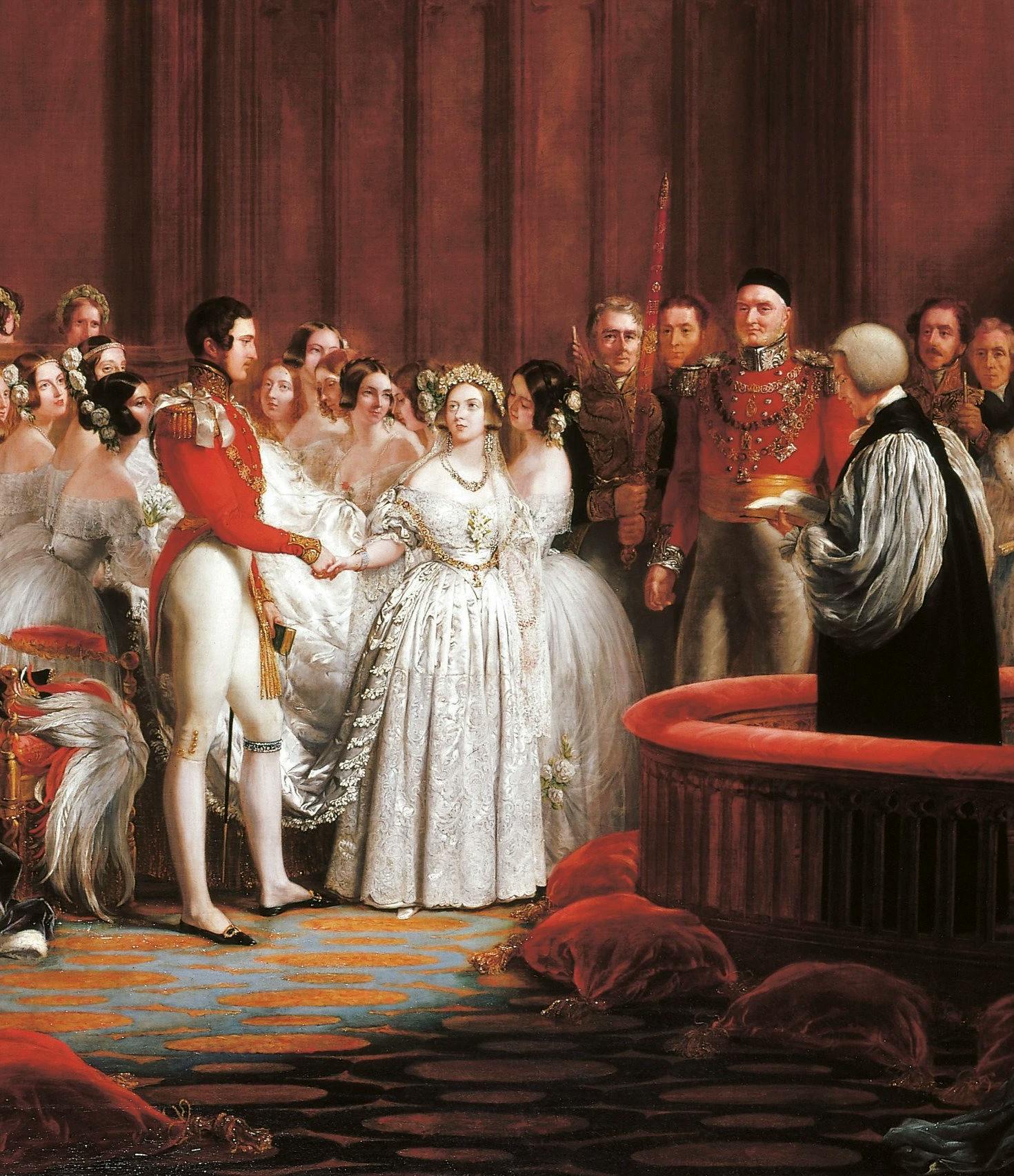
The Marriage of Queen Victoria (1840), by George Hayter via Wikimedia Commons
Pale Skin and Delicate Features Were a Must
From the 1830s through the 1860s, artists set a pale, hairless, clean, feminine ideal that represented youth, purity, and virtue. The Victorians believed cleanliness was next to godliness, and with that came morality and the desire to be respectable.
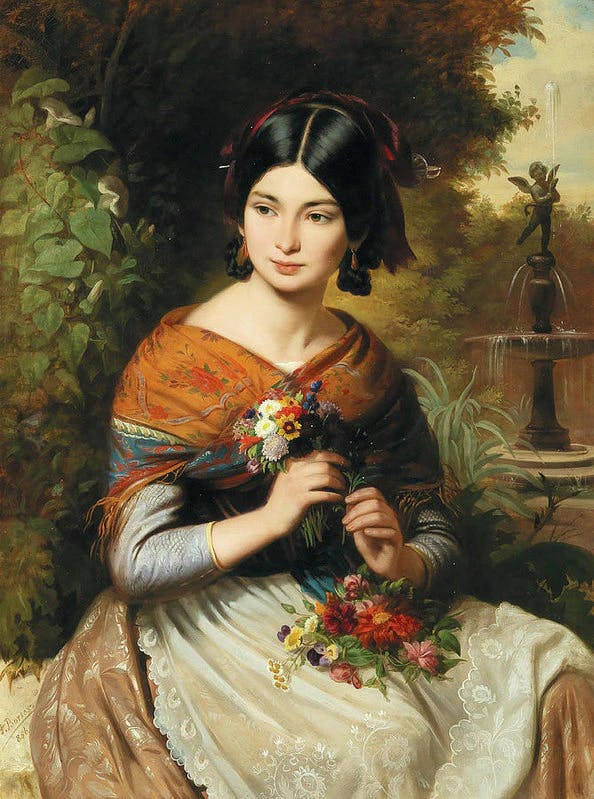
A Girl With Flowers (1856) by József Borsos
Beau Brummell (1778–1840) had started a fad of bathing daily as early as 1810, but it wasn’t until the mid-1800s that the practice grew in popularity. A bath likely included rubdowns with pumice stones to remove rough skin and applying moisturizing and essential oils to soften the skin while giving it a nice smell.
The practice of bathing daily didn’t start until 1810.
For women, the Victorian Era was hyperfocused on characteristics representative of exaggerated feminine and delicate features, demure presentation, and frail/delicate demeanor.
But probably one of the craziest beauty standards during the Victorian era overlapped with symptoms of sickness and decay, specifically tuberculosis, which was a disease that ran rampant during that time and was responsible for 25% of the annual deaths in Europe. Some tuberculosis symptoms gave women the desired physical features of that time: unhealthily pale and tender skin, skeletal thinness, glinting eyes, and red cheeks and lips.
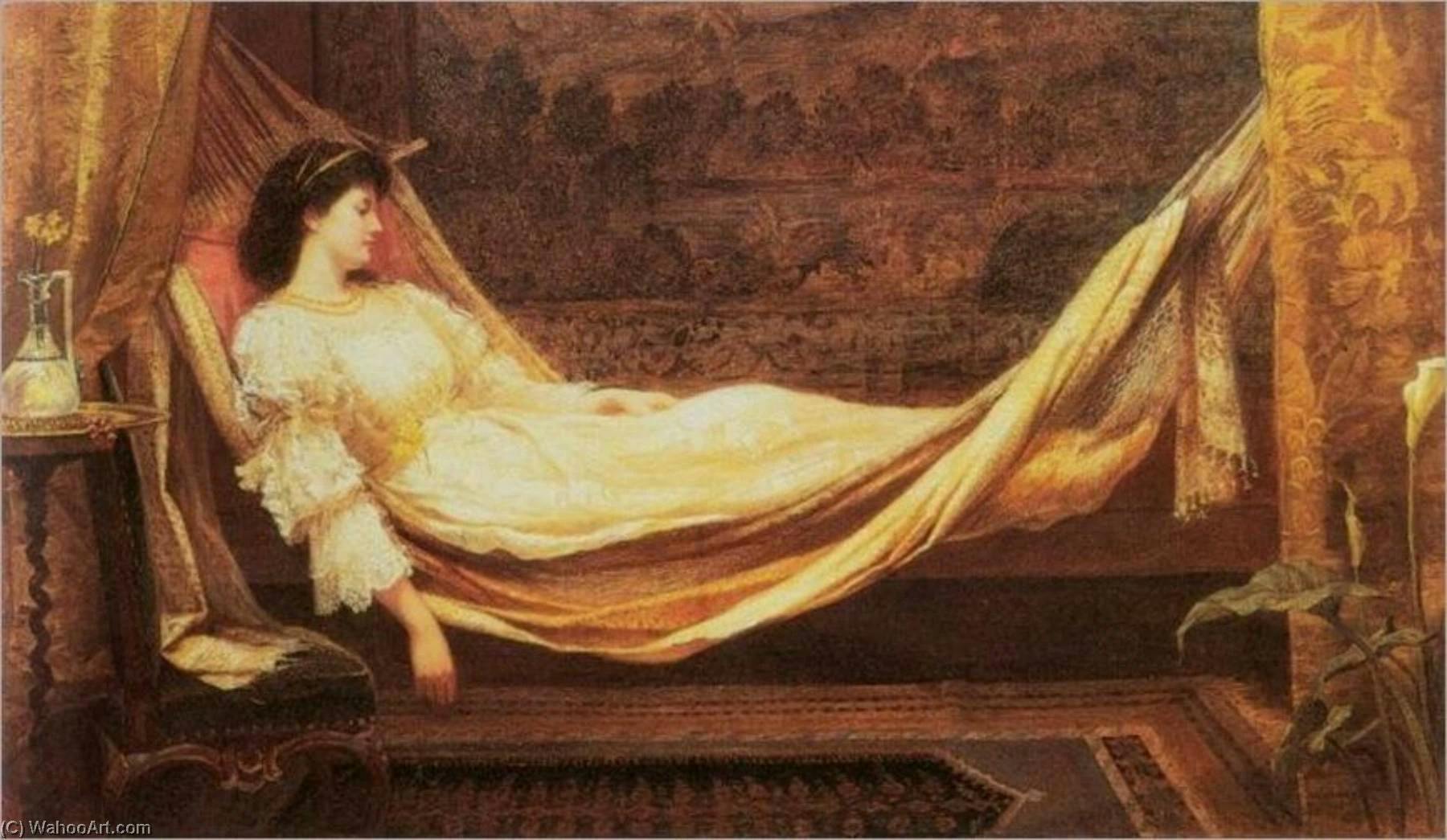
A Golden Daydream (1828) by Emily Mary Osborn, via Wikimedia Commons
Herbs Were a Cornerstone of Skincare
During Victorian times, traditional herb and flower gardens were an integral part of family life in England and Europe, and generations of women indulged in at-home beauty treatments, thanks to herbs grown in pots or gathered from countryside meadows.
Herbal Creams and Lotions
Victorian ladies were admired for their flawless complexions, which they managed to preserve well into old age. Indeed, Queen Victoria herself was renowned for her soft and smooth, wrinkle-free complexion well into her later years. This was due not only to the cold, cloudy, and moist English climate, but also to the clever handcrafting of herbal creams and lotions using home-grown ingredients.
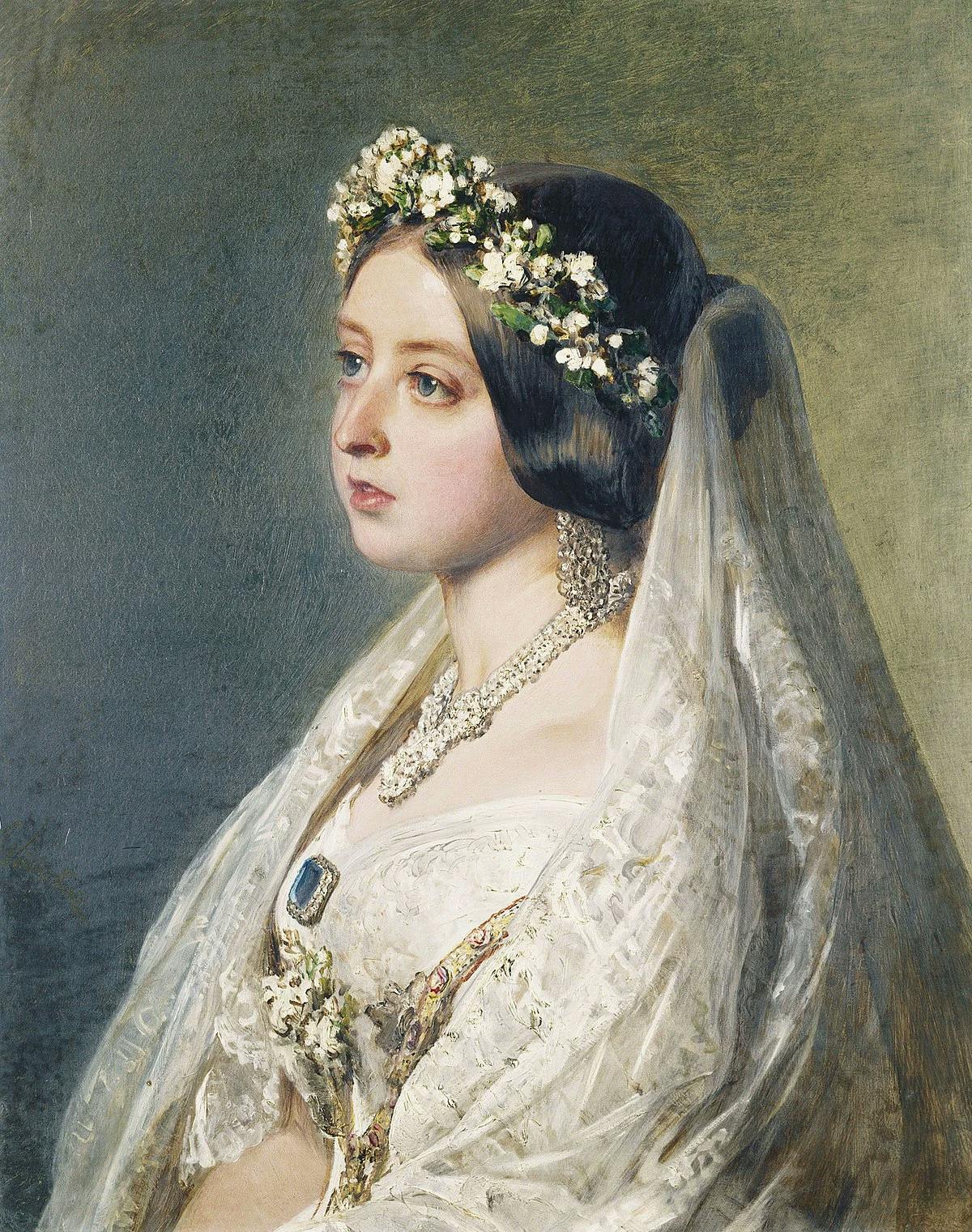
Queen Victoria (1872) by Franz Xaver Winterhalter, via Wikimedia Commons
Because commercial beauty products were not available during the early to mid-19th century, women had to use the knowledge that had been handed down from generation to generation to take care of their complexions.
Generations of women indulged in at-home beauty treatments that incorporated herbs and flowers.
A Victorian woman spent a considerable amount of time at the dressing table. Besides brushing her hair, she would also apply cleansing cream, moisturizer, body lotion, hand cream, and lip balm.
Some of the most popular recipes found in old Victorian archives are lavender hand cream, rosemary shampoo, pelargonium night cream, rose and rosehip oils for the face, chamomile water, green clay, and herbal facial masks to draw out impurities and smooth skin texture.
Beeswax Products
Additionally, people back then kept apiaries in their gardens and used the honey, beeswax, and propolis from the hives to make a base for their skincare products. Beeswax was melted in double boilers with the addition of rose water made from rose petals to make the finished product smell nice. They then used these heavier creams for wintertime as it’s likely their skin would become extremely dry during winter.
Chemical Peels
Victorian ladies also practiced what's considered to be the earliest form of chemical peels by diluting sulfuric acid and applying it directly to their skin with a brush. This was believed to slow down the skin's aging process and keep wrinkles at bay but also deal with other, more serious skin conditions such as acne, blisters, rashes, and warty tuberculosis.
Victorian ladies used the earliest chemical peel, diluting sulfuric acid and applying it directly to their skin.
This practice resulted in the “patient” being unavailable to receive visitors or to participate in any form of socializing for at least eight weeks while the skin healed. The person only appeared at places of absolute necessity, with a hat and a veil covering the face, and sun exposure was strongly discouraged while the skin was in the healing stage.
Whitening Products
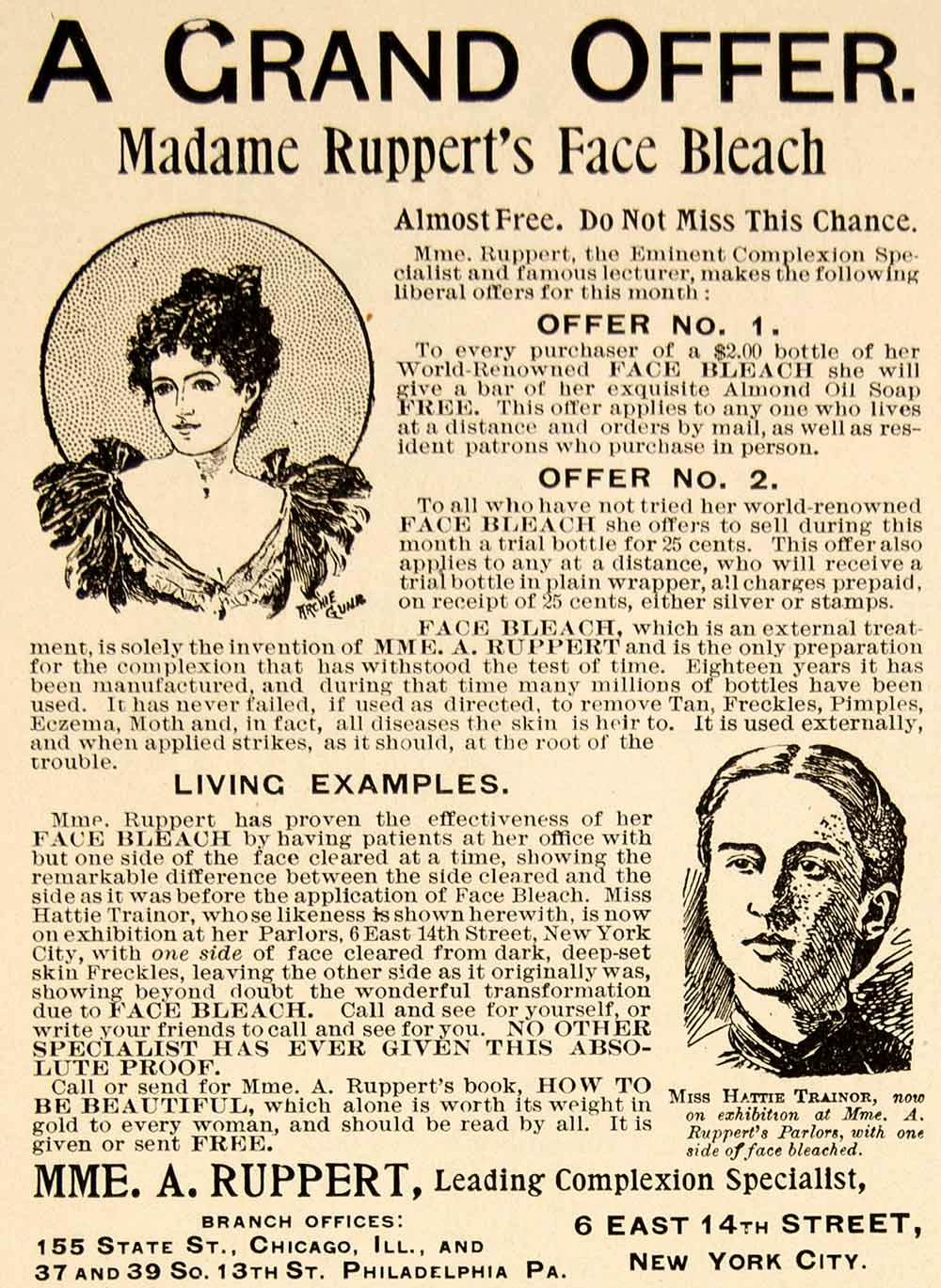
1898 Ad for Madame Ruppert's Face Bleach
And the last, and probably the most popular skincare products from that time, were whitening products that included "arsenic leaves" (paper leaves soaked in an arsenic solution), lead-based creams, chalk, and slate, used all over the face, neck, and body in an attempt to whiten the skin. This use of toxic ingredients to breed beauty often led to fatal consequences.
Makeup Was for "Loose Women" – But They Still Wore It
There was a derogatory attitude towards the use of makeup during the Victorian era as it was often connected with the theater and prostitution. Women often had to hide their makeup within secret compartments inside their “toilet boxes,” or they would repackage their cosmetics with innocent pharmaceutical names that a doctor could have prescribed them, just in case their cases were seen.
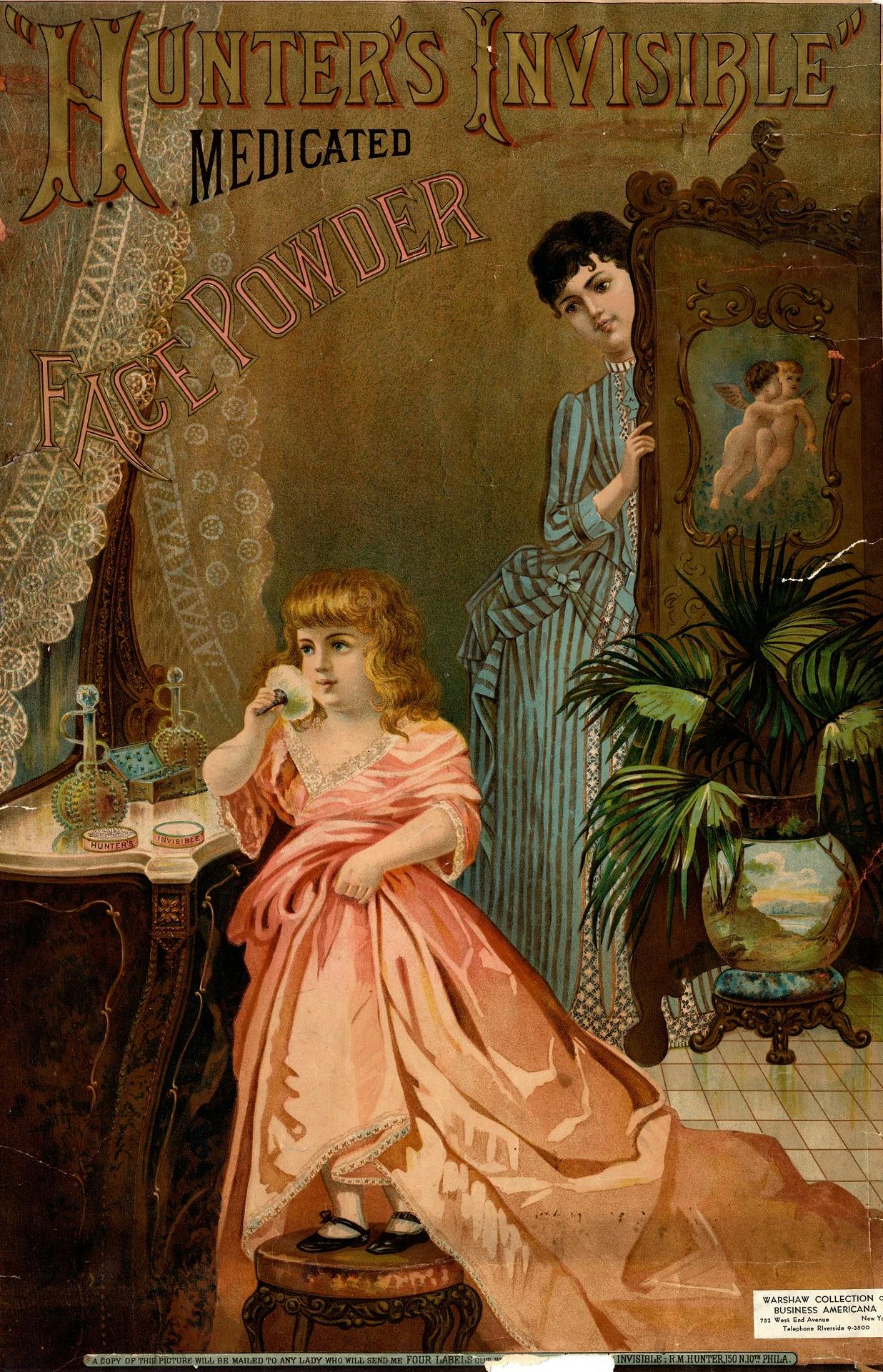
Hunter's Invisible Medicated Face Powder advertisement, via Smithsonian Archives
However, numerous pieces of evidence suggest that members of the higher class often used subtle dusting and rouge on the cheeks to boost their complexions. Besides that, women swiped beeswax on their eyelashes and would stick clusters of soot or even crushed gemstones to accentuate them. Additionally, women heated a mixture of pitch, resin, and frankincense, which they rubbed into their brows to enhance their appearance.
Hairstyles Got Extravagant
Hairstyles during the Victorian era breathed elegance and purity. All hairstyles needed to be neat, without a single strand out of place. The typical early Victorian hairstyle was parted down the middle and tied back, often with ringlets or braids at the sides.
Washing the hair was infrequent due to the harshness of the soaps, so constant brushing cleaned the long tresses and distributed naturally occurring oil, along with the application of other scented oils and perfumes.
Curled hair became very popular in the 1870s because the curling iron was introduced (first patented in 1866), and more elaborate hairstyles were expected.
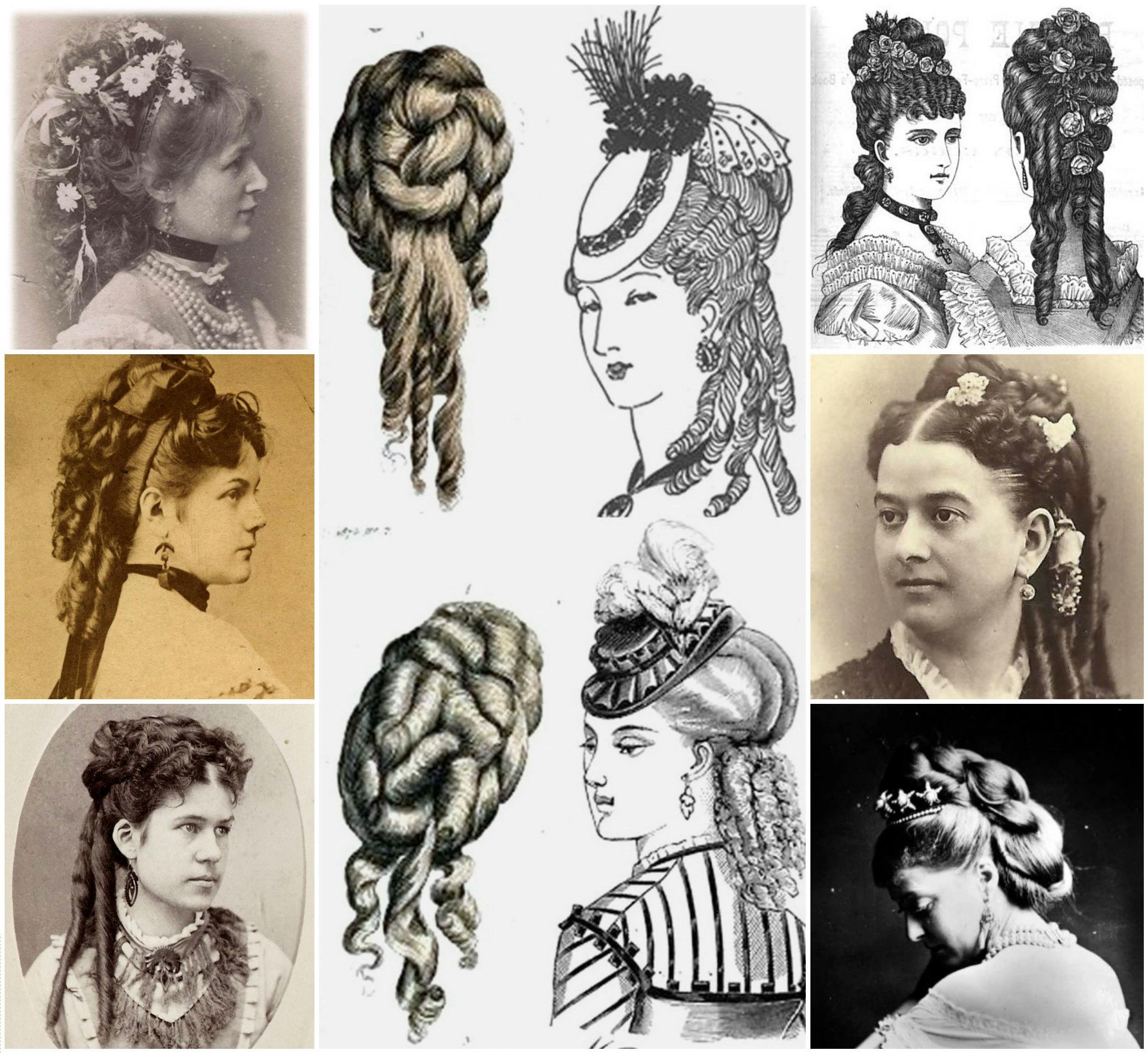
Blonde hair also became very popular in the 1800s as women bleached their hair with various mixtures consisting of diluted barium, potassium hypochlorite, and lemon juice.
Dying was achieved to limited degrees using organic compounds like henna, but in 1856, the first synthetic dyes were produced from coal tar. This led to cheaper, more stable and enduring, and far more varied colors for fabrics, and long-lasting black and brownish options for hair through the 1860s. Silver nitrate was utilized to darken the hair, and it was generally used by ladies who wanted to hide grey hair.
Corsets, Bustles, and Lace... Oh My!
Fashion during the Victorian era is renowned for its corsets, bonnets, top hats, and bustles, among other popular pieces.
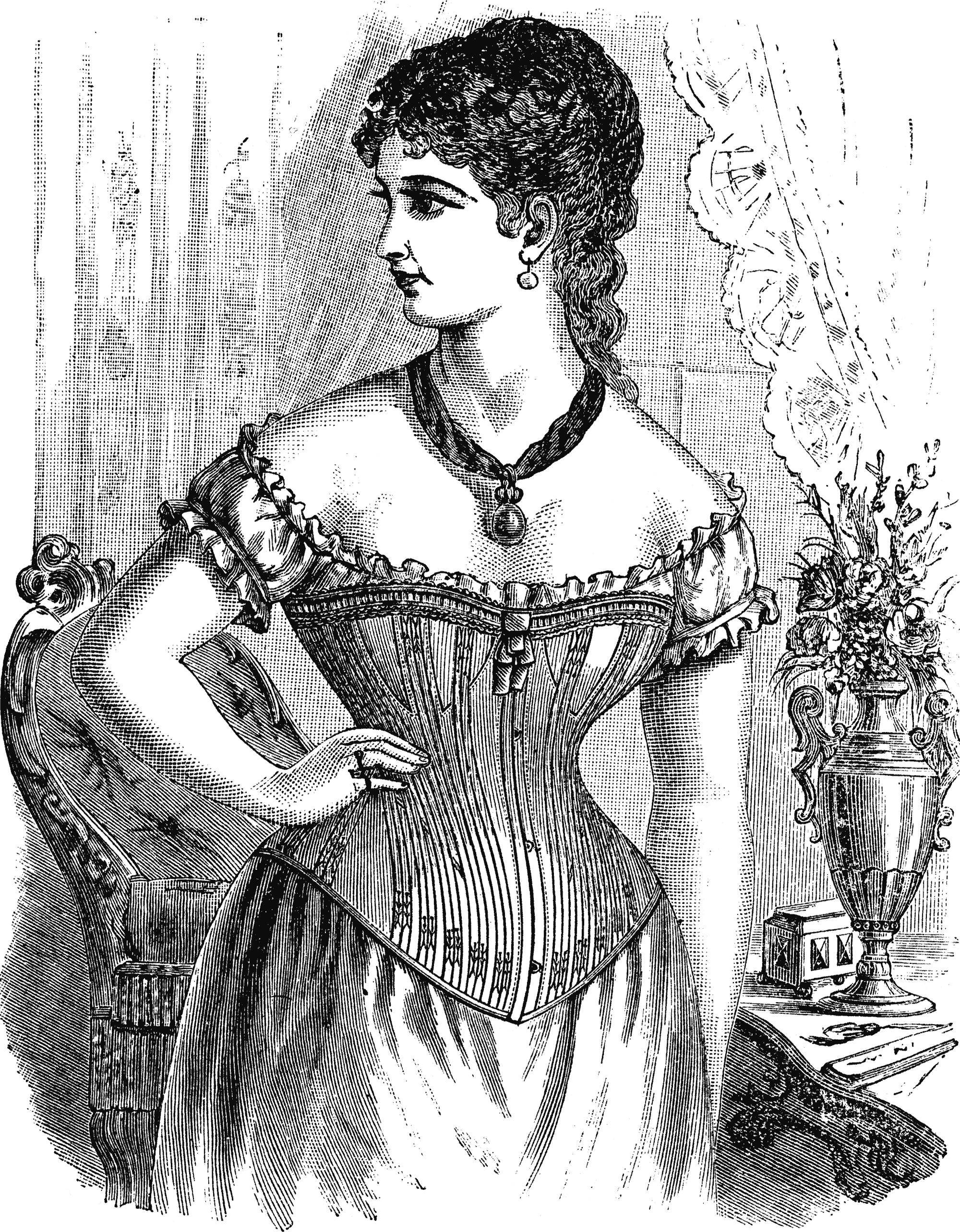
Thomson's Crown Corset (1882), via Wikimedia Commons
The most revealing of Victorian women’s clothing was the ball gown, and during the 1840s to 1870s, short sleeves covered the armpits, so a lady could dress for a party without worrying about body hair, except perhaps her arms if that was a concern for her.
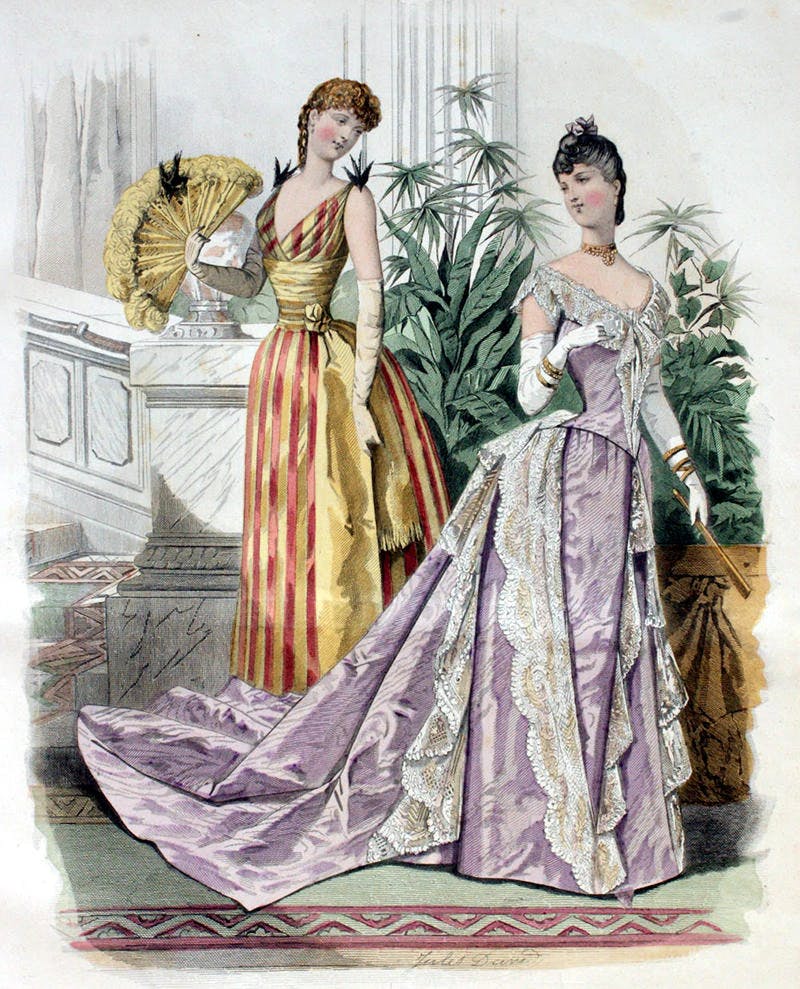
Fashion Plate of Evening Gowns (1888)
When it comes to the undergarments, Victorian women wore many layers of underclothes, including a chemise (or shift), knee-length drawers with an open crotch seam, stockings, a camisole (or corset cover), short horsehair crinolines, and three or more starched ankle-length petticoats. Victorian undergarments were white or unbleached beige and usually very plain without lace or embroidery. They were made from natural fabrics such as linen and cotton.
Since the Victorian era lasted for almost 60 years, corset styles changed radically during that time. Early corsets were simple shaping garments, often only made with linen, satin, and cotton cording for shaping. However, as more dramatic shapes became popular in the 1850s and onward, more dramatic corset shapes appeared. Using whalebone for stability, corsets shaped the waists and busts of women depending on the look du jour.
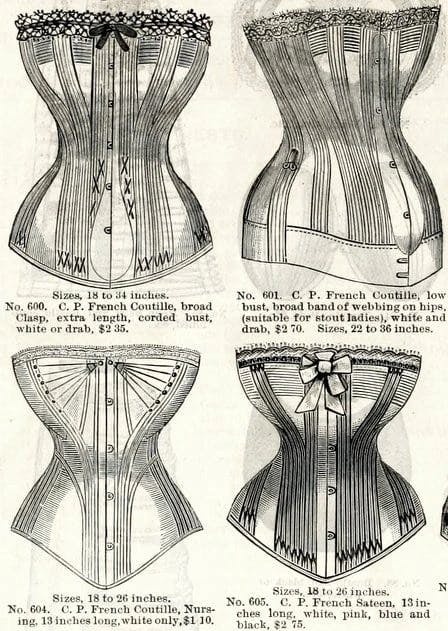
B Altman Corset Catalog from 1886
For example, the 1890s saw an obsession with comically small waists and large bosoms. This look was achieved through a combination of corset shape and a lot of padding. It was common for women to pad their bust and hips to give the illusion of a smaller waist. And don't let period photographs fool you. There was plenty of photo manipulation even in the late 19th century, and many "impossibly small" waists were in fact the result of a little old-fashioned photo magic.
But probably the most infamous aspect of Victorian fashion was the bustle. The invention of the spring steel crinoline cage in 1856 set off decades of obsession with the strange shapes that could be achieved using metal under one's skirts. You'll recognize the shape of these crinoline cages from Civil War movies like Gone with the Wind. Enormous, round skirts were all the rage from the late 1850s through the 1860s.
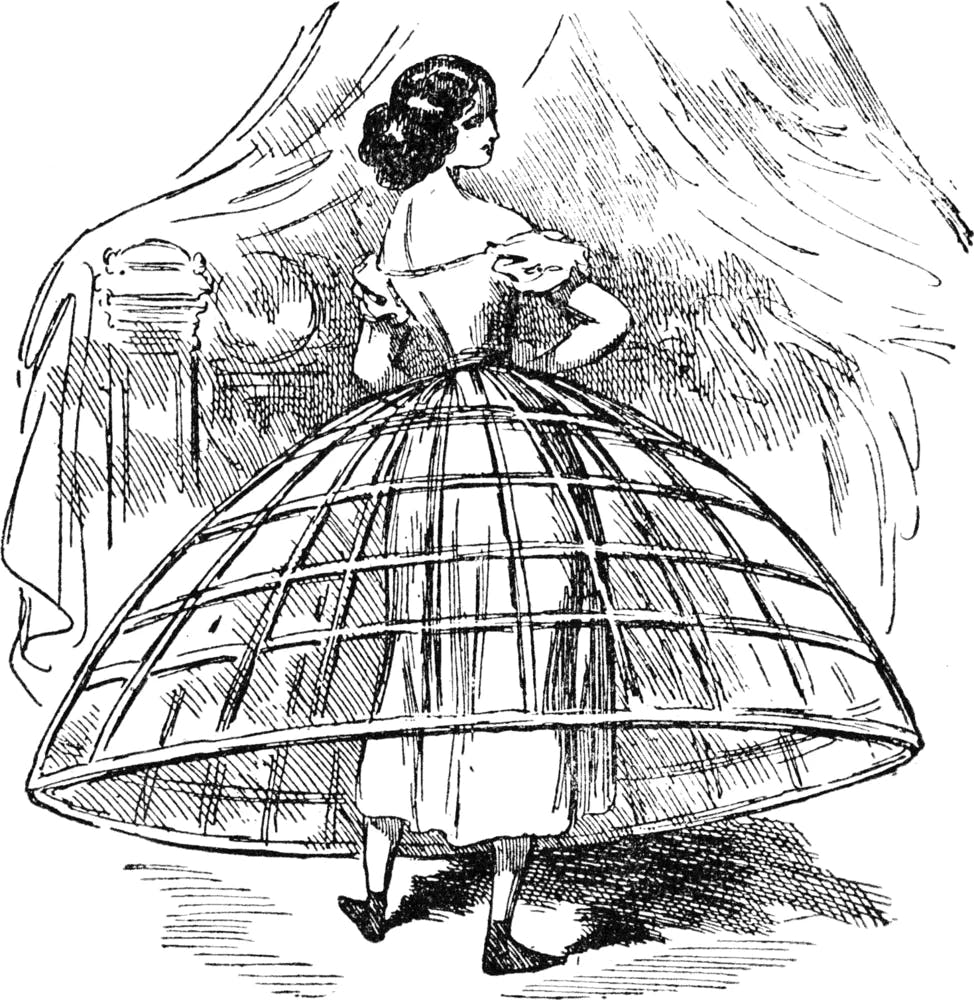
A spring steel crinoline from the 1850s.
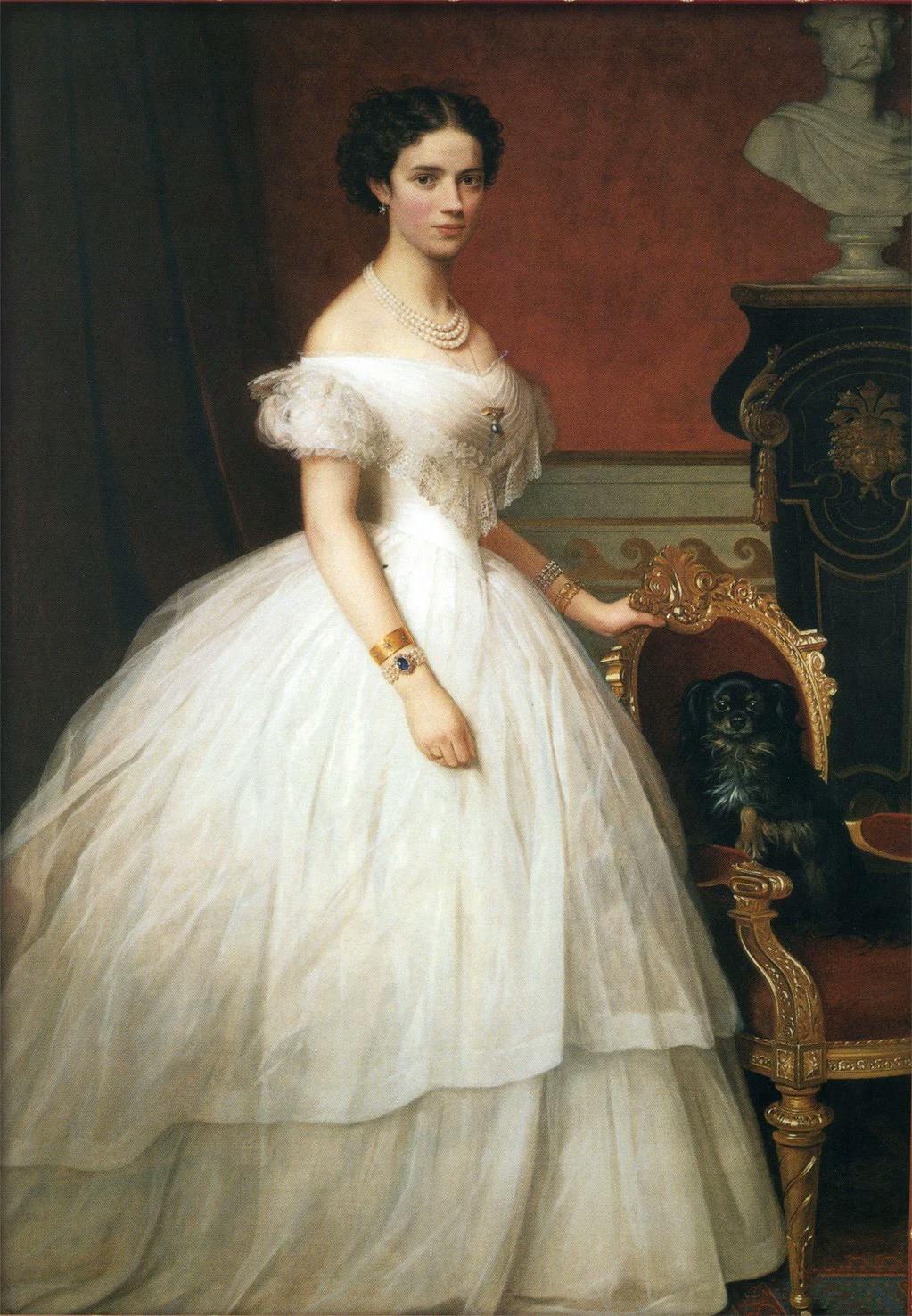
Princess Dagmar of Denmark wearing a crinoline in the 1860s, via Wikimedia Commons
However, beginning in the 1870s, a new fad emerged. It started with a low bustle, where skirts had extra fabric that was gathered at the back to create a sort of "bustle" along the train of their dresses. By the 1880s, this had turned into full-on built-out bustles. The most comical of which was the lobster tail bustle, which indeed looks like a lobster tail under one's skirts.
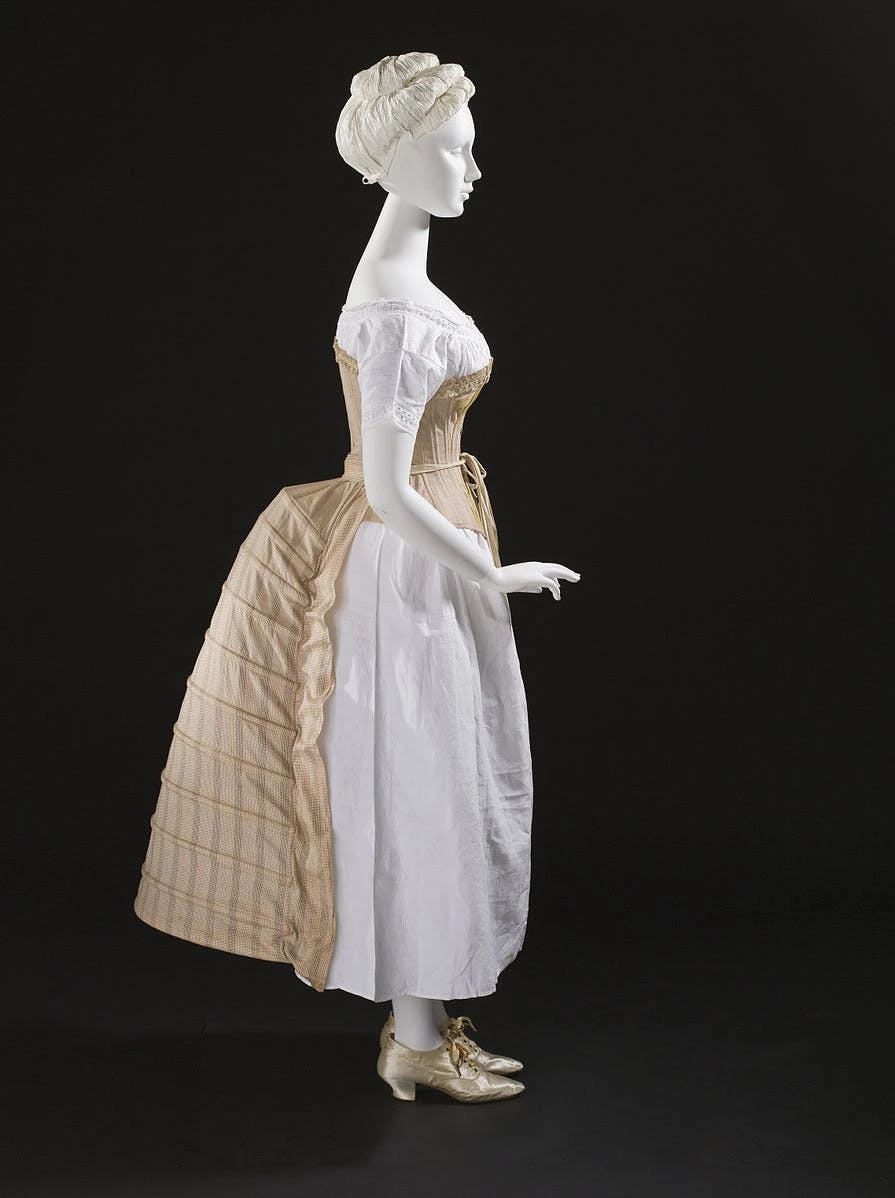
Example of a lobster tail bustle, via Wikimedia Commons
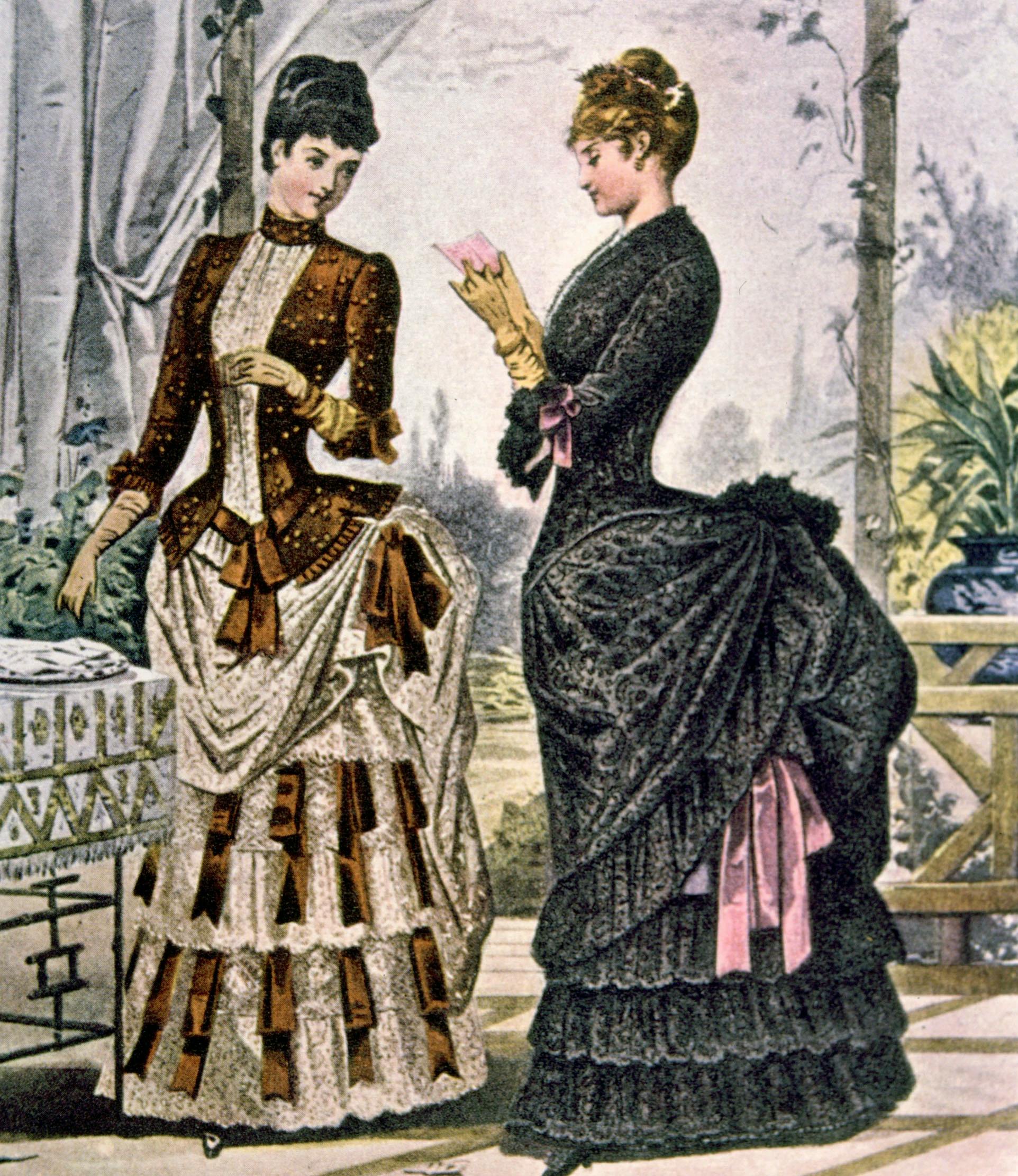
Fashion plate of bustle dresses from the 1880s.
Talk about bootylicious!
Closing Thoughts
The Victorian era definitely gave people some wild and dangerous beauty standards. Which one did you find most bizarre?
Help make Evie even better! Take the official Evie reader survey.